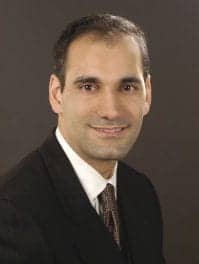How much is a plastic surgery practice really worth?

Reasons for appraising a medical practice’s worth include: practice succession, retirement, and estate planning; partnership disputes and divorce; and as a tool for organic growth and strategic planning. However, the appraisal is fraught with many pitfalls. No medical specialty seems immune.
For example, a gynecologist asked her certified public accountant (CPA) for the value of her practice and was correctly given its lower book value rather than its higher fair market value (FMV) as a profitable ongoing concern. Afterward, she lost tens of thousands of dollars in a subsequent sales transaction. Although her CPA produced correct figures for exactly what she requested, she did not differentiate between the two terms of art.
Later legal mediation determined that neither was responsible for the linguistic error, because both parties acted in good faith. Of course, it was the gynecologist who paid dearly for her mistake in communication and business acumen.
Or, consider the bizarre tale of two medical school classmates who signed a buy-sell agreement upon creation of their nascent practice. The agreement stipulated that upon departure or dissolution, ownership would be determined not by some periodically updated valuation review or appraisal formula, but by a matched and lost process—also known as a flip of a coin—for a medical conglomerate worth more than a million dollars 30 years later.
Perhaps it is because of these horror stories that members of the Institute of Medical Business Advisors Inc (Norcross, Ga) have observed many neurotic purchasers who spend far too much time, money, and energy researching a fairly priced and modest plastic surgery practice to no avail—also known as paralysis by analysis. They have also seen others purchase exorbitantly priced practices for more than 2 million dollars on a handshake and a promise.
Give the complex task of plastic surgery practice valuation the gravitas it deserves, and run from those who would broker your purchase or sale with a free or Internet-based valuation, or would provide finance-participation schemes for purchase as a young practitioner. Realize that according to IRS Revenue Ruling 59-60, the value of any medical practice is generally based upon three determinants:
• level of the expected distribution and future cash flows;
• time of the expected distributions and cash flows; and
• uncertainty of the expected cash flows and distributions.
Common Valuation Shibboleths
Much like a prenuptial agreement, two independent valuations should be obtained—one for the buyer and one for the seller—and they should be paid for separately. Joint engagements are possible with full written disclosure. Moreover, plastic surgeons should avoid these 10 valuation shibboleths:
1) Accounting-book value is not the same as FMV, and there are several different definitions of value—such as investment value, intrinsic value, going-concern value, and liquidation value. A medical practice may have more than one value. For example, a 1% interest in a practice is worth much more if it is part of a control position than a 1% interest that is part of a minority interest. So, it is important for the appraiser to know up front the purpose for which the valuation has been retained.
2) There is also variation in pricing methods: asking price, realistic price, creative price, friendly price, emotional price, or desperation price.
3) Physician compensation is inversely related to practice value. In other words, the more a plastic surgeon takes home in salary, the less the practice is worth—and vice versa. This is the difference between a short-term and a long-term business strategy.
4) Do not use back-of-the-envelope trade-magazine multiplier methods. Instead, obtain a valuation under the Uniform Standards of Professional Appraisal Practice (USPAP), which were first issued by the IRS in 1994–1995.
Combine the three recognized USPAP valuation methods: income method with discounted cash flow analysis (DCFA), market method, and cost approach. Be sure to adjust financial statements to normalize each line entry. The DCFA must be done on an after-tax basis, and proper assumptions on physician compensation must be based on market rates.
5) Understand the intangible difference between nontransferable personal goodwill and transferable practice goodwill, as well as majority control premiums and minority shareholder discounts.
6) A practice on-site walk-through is mandatory; trust but verify tangible assets and liabilities, satellite offices, equipment, and employees.
7) A valuation is not a source-document audit, but only a reliance on representations. Know specialty and industry economic conditions and assumptions, trends, operating history, physician bonuses, dividends, distributions, sales percentages, health care regulations, future earnings-capacity estimates, competitors, and comparable practice sales prices.
Be sure to review practice costs and eliminate unnecessary practice expenses, specific perks of practice ownership, and unusual nonrecurring costs; and adjust for overinflated salaries or relatives on the payroll.
8) Obtain a separate and independent real estate appraisal and instrument appraisal, if needed.
9) Make sure the valuation is written, substantiates value, supports conclusions, and is signed by an appraiser who will defend the valuation in court as a qualified expert witness, if need be. This certification is formally known as an opinion of value.
10) Most reputable valuation experts charge a flat fee or bill on an hourly basis, plus expenses. A commission- or percentage-based fee schedule is considered unethical and may be illegal. Fees should not be predicated on sale or be driven by commission.
Practice Purchasers and Sellers
Purchasers should make sure that financing has been lined up before the sale. The three major impediments to loan acquisition, according to certified medical planner (CMP) Hope R. Hetico, RN, MHA, are medical school loan debt, a home mortgage, and an automobile note, in that order. Running up debt seems particularly onerous for plastic surgeons who are known as conspicuous consumers.
Strive to reduce or eliminate debt before applying for a loan. Consider down payments, seller financing, and the need for a formal written business plan. The days are long gone when a physician or plastic surgeon could stroll into a bank, degree in hand, and obtain a quick start-up loan.
Sellers should begin the process 1 to 3 years before the expected closure. Ironically, larger and more successful practices may be more difficult to sell than those near the center of the bell curve for their specialty. Sellers should also decide whether accounts receivable and working capital are part of the transaction, and determine the ultimate tax consequences of the entire deal. Transactions are more successful and less stressful when the purchaser is an associate of the physician.
The Evolution of Valuation
One of the landmark cases in the business-valuation industry is The Estate of Edgar A. Berg v Commissioner (T. C. Memo 1991-279). The court criticized its two CPAs for not being qualified and for failing to provide an analysis of the appropriate discount.
The court observed that both CPAs made only general references to a prior court decision to justify their opinion of value. In rejecting the CPAs, the court accepted the IRS’s expert because of his advanced education and demonstration of the discounting process.
This case marked the beginning of the Tax Court’s tendency to lean toward the side with the most comprehensive appraisal. Previously, it had a tendency to split the difference. Some experts think that the Berg case launched the business-valuation profession.
Since the Berg case, the corpus of knowledge for the valuation profession has grown exponentially. Besides isolated CPA valuators, the space is now the domain of suitably trained MBA, AVA (accredited valuation analyst), MSA (master senior appraiser), and CMP certification and degree holders. Well-known appraisers include the few consulting firms for large hospitals and national health care systems. However, the impression that bigger is not always better may be confirmed by the Arthur Andersen debacle.
Therefore, hire local or regional professionals with publishing, teaching, or academic experience—not commissioned agents. Medical specificity is paramount. Physician valuators with experience and deep subject-matter expertise are ideal.
Finally, like plastic surgery, valuation is as much art as economic science. It is easy to discern that what we are really looking for is a price range, with a reasonable floor and ceiling. After all the mathematical spreadsheets have been constructed and due diligence has been performed, the next step in the sale process is just good old-fashioned negotiation.
Or, as Donald Trump might say, the art of the deal is in the terms. PSP
David E. Marcinko, MBA, is a certified financial planner, a certified medical planner, and a nationally known medical practice-valuation principal with the Institute of Medical Business Advisors Inc. He can be reached at (770) 448-0769 or [email protected].
Recommended Reading
Marcinko DE. The Advanced Business of Medical Practice. New York, NY: Springer Publishing; 2004.
Marcinko DE. Financial Planning for Physicians and Advisors. Sudbury, Mass: Jones and Bartlett Publishers; 2004.
Marcinko DE. Insurance and Risk Management Strategies for Physicians and Advisors. Sudbury, Mass: Jones and Bartlett Publishers; 2005.
Marcinko DE, Hetico HR. Dictionary of Healthcare Economics and Finance. New York, NY: Springer Publishing; 2007.
Marcinko DE, Hetico HR. Dictionary of Health Insurance and Managed Care. New York, NY: Springer Publishing; 2006.



